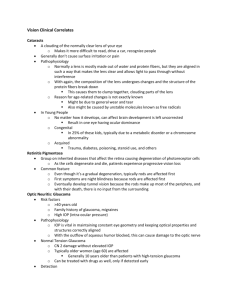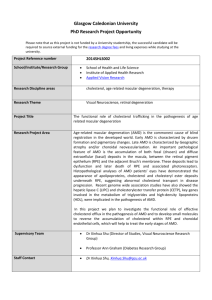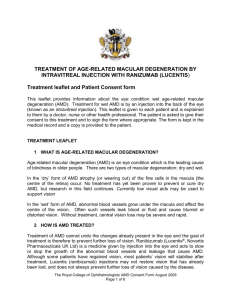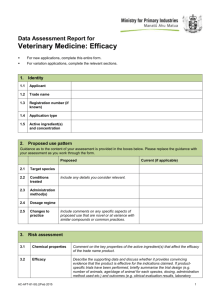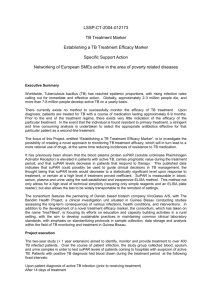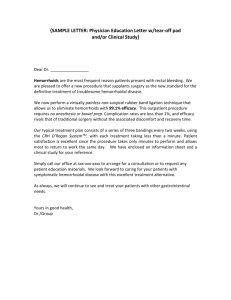outline26238
advertisement
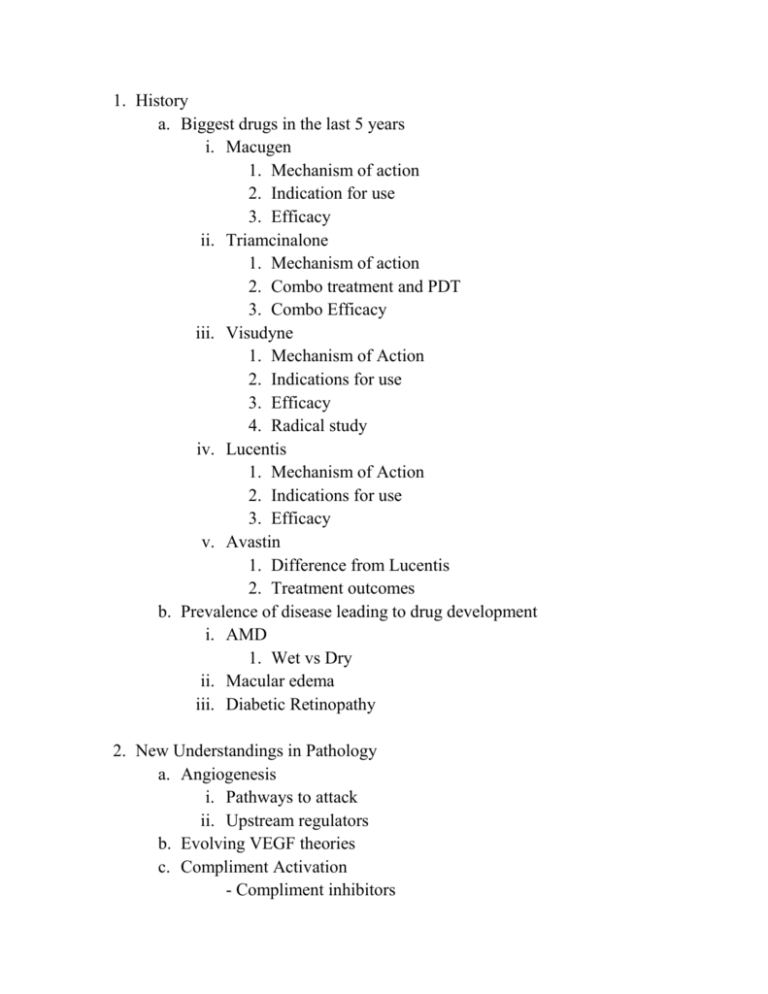
1. History a. Biggest drugs in the last 5 years i. Macugen 1. Mechanism of action 2. Indication for use 3. Efficacy ii. Triamcinalone 1. Mechanism of action 2. Combo treatment and PDT 3. Combo Efficacy iii. Visudyne 1. Mechanism of Action 2. Indications for use 3. Efficacy 4. Radical study iv. Lucentis 1. Mechanism of Action 2. Indications for use 3. Efficacy v. Avastin 1. Difference from Lucentis 2. Treatment outcomes b. Prevalence of disease leading to drug development i. AMD 1. Wet vs Dry ii. Macular edema iii. Diabetic Retinopathy 2. New Understandings in Pathology a. Angiogenesis i. Pathways to attack ii. Upstream regulators b. Evolving VEGF theories c. Compliment Activation - Compliment inhibitors - Potentia d. Differentiating subtypes of macular disease e. Genotype vs Phenotype f. Fenretinide i. A synthetic retinoid derivative 1. Stargardt’s 3. Drugs close to market a. Bringing a drug to market i. Process ii. Timeframe iii. Phase trials iv. Clinical end points b. Combination therapy drugs i. Mechanism ii. Benefit iii. Limitations c. Dry AMD drug?/CTNF (ciliary tropic neuro factor) i. Mechanism 1. Encapsulated cell technology ii. Benefit iii. Limitations d. Dry and Wet AMD drug complement inhibitors i. Mechanism ii. Benefit iii. Limitations e. TKI’s(tyrosinase kinase inhibitors) VEGF receptor blockers i. Mechanism ii. Benefit iii. Limitations iv. VEGF-Trap f. Copaxone ( glatiramer acetate) i. Mechanism 1. an immunomodulator that affects different levels of the immune response, as an MHC blocker, T cell receptor antagonist, and as a potent inducer of regulatory T cells ii. Limitations g. Rapamycin i. Mechanism 1. inhibits the response to interleukin - 2 (IL-2) and thereby blocks activation of T and B-cells ii. Limitations h. Synthetic derivatives i. Fenretinide 1. Early promise 2. Current struggles 4. Drug delivery models a. Systemic i. Avastin ii. Squalamine iii. Tnp-470 (endothelial cell cycle arrest) iv. Thalidomide/ Thalidomide and prednisone v. Arxxant for diabetic retinopathy b. Topical i. TKI’s ii. Nsaids c. Intravitreal i. Injections – Anti-VEGF’s, Microplasmin 1. Risks ii. Sustained release - posturdex, flucinalone, ganciclovir, osurdex iii. Trans-scleral – triamcinalone, anecortane 5. Conclusions a. The evolution of retinal treatments i. Stem cell research 1. Type of cells available 2. Target tissues 3. Major stem cell problems 4. Somatic cell nuclear transfer
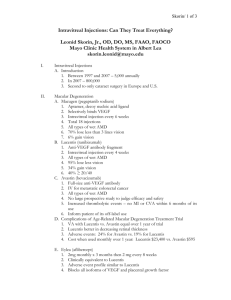
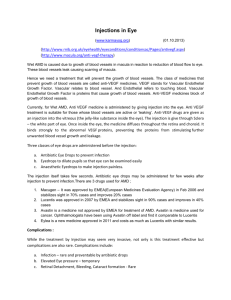

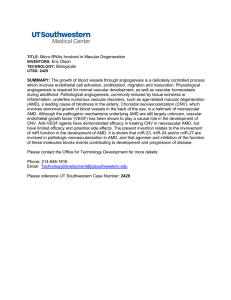
![Quality assurance in diagnostic radiology [Article in German] Hodler](http://s3.studylib.net/store/data/005827956_1-c129ff60612d01b6464fc1bb8f2734f1-300x300.png)

